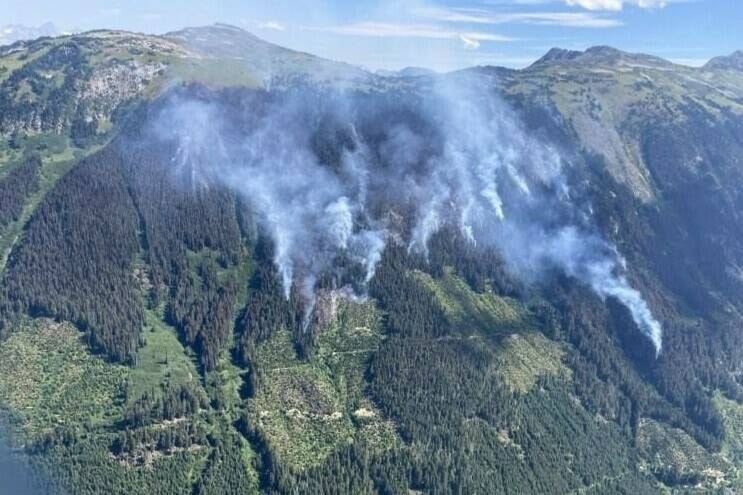There are no longer any wildfire evacuation orders or alerts in place anywhere in British Columbia, the emergency management minister said on the heels of wet weather that has helped put a damper on fire activity, particularly in the south.
Bowinn Ma said evacuation alerts have been lifted for more than 1,000 properties throughout B.C. since last week.
About 260 wildfires remained active in the province Wednesday, with 15 per cent or just under 40 of those fires classified as burning out of control.
That’s down from more than 100 out-of-control fires last week.
“These are encouraging numbers,†Ma told a news conference.
“Recent cool, wet weather is giving BC Wildfire Service an opportunity to make significant gains on wildfires, especially in the south.â€
Still, a bulletin from the BC Wildfire Service on Wednesday said parts of southeastern B.C. and much of the north has remained dry. It said a warming and drying trend was expected to continue into the Labour Day long weekend.
In the southern Interior, the Thompson-Nicola Regional District lifted its final evacuation orders Wednesday due to the Shetland Creek wildfire.
A bulletin from the district said the all-clear notice affected 12 properties in the Venables Valley area between Ashcroft and Spences Bridge, B.C.
The fire that’s now classified as “being held†within its current or predetermined perimeter was discovered July 12 and grew quickly, prompting the district to issue evacuation orders covering about 100 properties over the next few days.
The BC Wildfire Service has said the 279-square-kilometre fire was displaying “stable†activity and crews would continue tackling any hot spots.
None of B.C.’s current blazes are considered “wildfires of note,†a designation issued when a fire is highly visible or poses a threat to people or infrastructure.
Ma said the news is positive, and people have done their part to keep the number of human-caused wildfires down, but the province is not out of the woods yet.
“Even with the recent rain we’re experiencing, there are impacts of prolonged drought in some parts of British Columbia and there are parts of the province that remain at higher risk for human and lightning caused wildfires,†she said.
Nathan Cullen, the minister of land, water and resource stewardship, said dry conditions have been persistent after significant drought in 2023, which stretched into this year with B.C. registering its lowest snowpack on record this past spring.
“The long drought conditions in many regions continue to put a strain on local water resources and the well-being of fish populations, in particular wild salmon, which rely on healthy, sustained water flows in rivers and streams,†he said.
Until the wildfire season is over, Ma said people need to take extra with campfires.
Campfire bans across much of the province have been rescinded, though other kinds of open burning continue to be prohibited in most areas.
The wildfire service has said that anyone lighting a campfire must maintain a fireguard by removing flammable debris, they must have sufficient water available to douse the fire, and they must never leave the flames unattended.
A campfire is any fire that’s no larger than 0.5 metres high by 0.5 metres wide. Anything larger is considered a Category 2 open fire.



